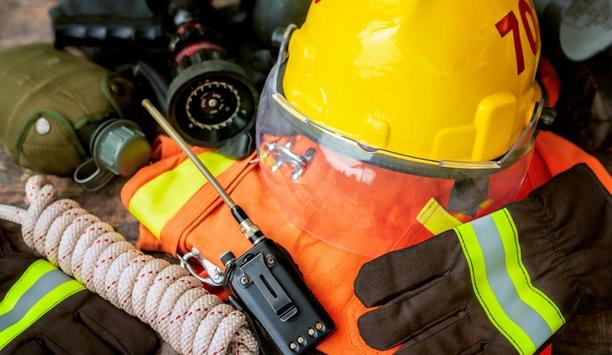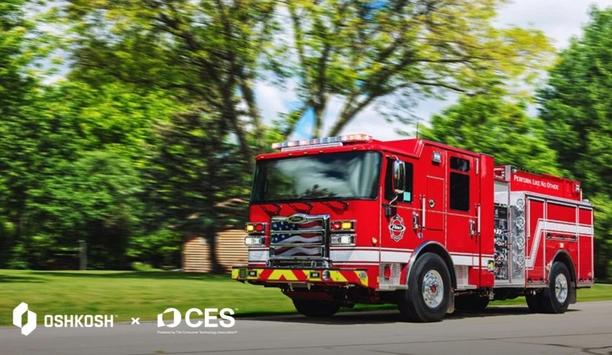According to the Health Building Note 03-01 Adult acute mental health units, all furniture, and fittings are required to be robust, anti-ligature, prevent opportunities for concealment and meet infection control requirements while being as domestic in style as possible and not offering opportunities for easy lifting or breakage. This is particularly important in rooms where service users are unsupervised, such as the bedrooms and en-suites.
Alongside the standard challenges that face a fire alarm system, unique issues relating to the complexity of the healthcare environment become apparent. These include:
- Damage to the fire alarm system components, which causes:
- Potential harm to patients or staff
- Interruption to system operation
- False alarming
- Interruption and cost to the facility due to repair works
- General false alarming
- Difficulty in the maintenance of alarm systems by fire alarm professionals and access to the site
- Ongoing cost of ownership
Fire Detection In Mental Health Care Facilities
In a mental health facility, fire detection is required, not only in all circulation areas but also, in patient bedrooms where they can be left unsupervised.
Automatic fire detection should be installed throughout the entire building area.
“Fire detection and alarm systems references BS5839 Part 1 Code of practice for design, installation, commissioning and maintenance of systems in non-domestic premises and recommends an L1 system category for hospital premises.” HTM 05-03 Part B.
L1 is defined as ‘automatic fire detection and fire alarm systems intended for the protection of life, should be installed throughout all areas of the building.’
Challenges Of A Standard Design And Its Alternative
The standard design of a fire detector does not meet anti-ligature and anti-vandal requirements due to the possibility of removing the detector from its base. Doing so will reveal the wiring which can lead someone to inflict self-harm.
An alternative is a load release anti-ligature detector, which operates on a magnetic base with concealed wiring. While approved, they still pose a risk to patients and staff as the detector itself can be used to cause harm.
Another disadvantage is that once the detector is load released it is no longer operational and will cause a lapse in system integrity.
Apollo Soteria Dimension - An Advanced Fire Detector
There is, however, an innovative solution - Soteria Dimension. Soteria Dimension is an anti-ligature and anti-vandal flush-mounted detector.
Soteria Dimension Specialist Optical Detector ensures continuous fire system integrity.
The Soteria Dimension Specialist Optical Detector completely removes the risk to the patient and staff and ensures continuous fire system integrity. The range is protecting quiet rooms at Edgeware Community Hospital.
Soteria Dimension incorporates unique optical sensors that streamline the design and enable flush mounting. Using a combination of infra-red LEDs and photodiodes, the sensors detect smoke particles, while chamberless technology eliminates dust and insect ingress to reduce false alarms.
Apollo Soteria Dimension - Ensuring Optimum Security
The shock-resistant metal faceplate is fitted with anti-tamper screws ensuring that the detector is completely secure, minimizing safety hazards.
Besides full compliance with the European Standards EN54 Part 7 for an optical smoke detector, Dimension has been certified to meet:
- DHF TS001 for anti-ligature use in specialist areas.
- Ministry of Justice Specifications STD/E/SPEC/038
Soteria Dimension is also fully backwards compatible and can be added or retrofitted to any existing Apollo protocol system, allowing updates to existing sites to reduce the risk of health hazards, damage to the system, and unwanted expenditure on repairs.
False Alarms
As defined by the Healthcare Technical Memorandum 05-03 (HTM):
- The activation of the fire detection and alarm system resulting from a cause other than fire.
- A false alarm becomes an Unwanted Fire Signal (UwFS) at the point the fire and rescue service is requested to attend.
False alarms can create an immediate risk to the patients due to disruption of the staff’s care for them and the
False alarms can be disruptive in mental health facilities creating an immediate risk. potential need to re-locate the vulnerable population. It is especially disruptive in mental health facilities where even the sound of an alarm can cause needless distress. There are multiple causes of false alarms in Healthcare premises as defined by HTM 05-03 Part H.
Where causes like cooking, smoking, design faults, and good intent can only be addressed by a change in the system layout or operational procedures of the facility, fire detection equipment can also aid the reduction of false alarms.
Apollo Soteria Dimension – ahead of standard smoke detection
As opposed to a standard smoke detector, Apollo’s anti-ligature and anti-vandal Soteria Dimension uses chamberless technology. While operating principles are the same, Soteria Dimension utilizes a virtual chamber.
Apollo’s Soteria Dimension uses chamberless technology unlike standard smoke detector.
The light scattering happens outside of the detector but still registers on the receiver like any ordinary detector. Alongside a virtual chamber, Soteria Dimension uses advanced drift compensation.
This adjusts the sensitivity based on the build-up of dirt to prevent it from misinterpreting dust for fire. This technology in combination with a completely sealed casing reduces false alarms from insect ingress and dust.
Maintenance and life-cycle of Apollo Sotria Dimension
Scheduled maintenance works can be a challenge within a secured facility. That’s why it is extremely important to ensure time on-site is utilized effectively. To clean and maintain a standard detector, you would have to remove the detector head and clean out the chamber.
Built-in isolation provides an option to identify detectors that are present when dusty works are being conducted.
This isn’t the case for Soteria Dimension. Without the need for a sensing chamber, all you have to do is wipe the faceplate with a dry lint-free cloth, making it far easier to clean, needing no extra training to keep maintained.
With multiple sensitivity modes available, Soteria Dimension has a much longer lifecycle. Built-in isolation provides the option to identify detectors that are present when dusty works are being conducted and isolate them from the system.
This removes the need to detach the detector every time construction works are ongoing. If a detector is faulty, isolating it will prevent unwanted alarms without compromising the integrity of the whole system. Without built-in isolators, you’d have to disable the whole loop.
Total Cost Of Ownership
Health Building Note 03-01 - Adult acute mental health units in its planning and design recommendations particularly highlights the need for flexibility of any systems and building overall as well as value for money.
“Significant attention should be given to life-cycle costing, and the fit with the longer-term commissioning and service planning strategy. A degree of “future-proofing” should be built into development plans to ensure that services can meet current and anticipated future need.”
Hospitals and mental healthcare facilities are frequently upgrading and constructing new buildings, therefore:
- the lifetime of a fire alarm system
- the ability of seamless staged upgrade
- the option to extend
- the cost of the ongoing maintenance contract
- and the number of suppliers, who can offer the service
should all be considered when designing and purchasing a fire alarm system for a healthcare unit.
Apollo's Backwards compatibility - For newer version upgrades
Apollo product range features backwards compatibility and open protocol.
All Apollo addressable product ranges, including Soteria Dimension, feature backwards compatibility and open protocol. Backwards compatibility ensures that newer versions of Apollo devices are able to work on legacy systems.
This provides a futureproof design, supporting seamless upgrades, and resolves issues with obsolete components by offering modern replacements.
The cost and complexity of renovation itself can vary depending on the type of system installed.
Challenges of closed protocol
Some NHS sites have experienced very high costs of ownership for closed protocol systems. A closed protocol can be described as a system where only a single supplier of installation and maintenance services is authorized to work with the fire system.
The ownership of systems like this means that the building owner is locked into a contract and the only way out is a full system replacement.
A fire system that allows the customer to choose between any qualified engineer to service/install a system is known as Open Protocol.
Soteria Dimension resolving specific safety challenges
Soteria Dimension is a highly engineered product, resolving specific safety challenges in unique healthcare environments. The flexibility of the Apollo system allows for a combination of components between standard detector ranges and Dimension to ensure the most cost-effective allocation of resources.
Fire detection in hospitals takes a lot of forethought and effort to get right, there are many challenges to consider when designing an optimal system. Balancing vulnerable people protection and system design, cost and false alarm rejection, regular maintenance, and minimizing patient disruption.
Apollo’s Soteria range including Soteria Dimension can be utilized to solve unique problems that face hospitals and mental health care facilities.















